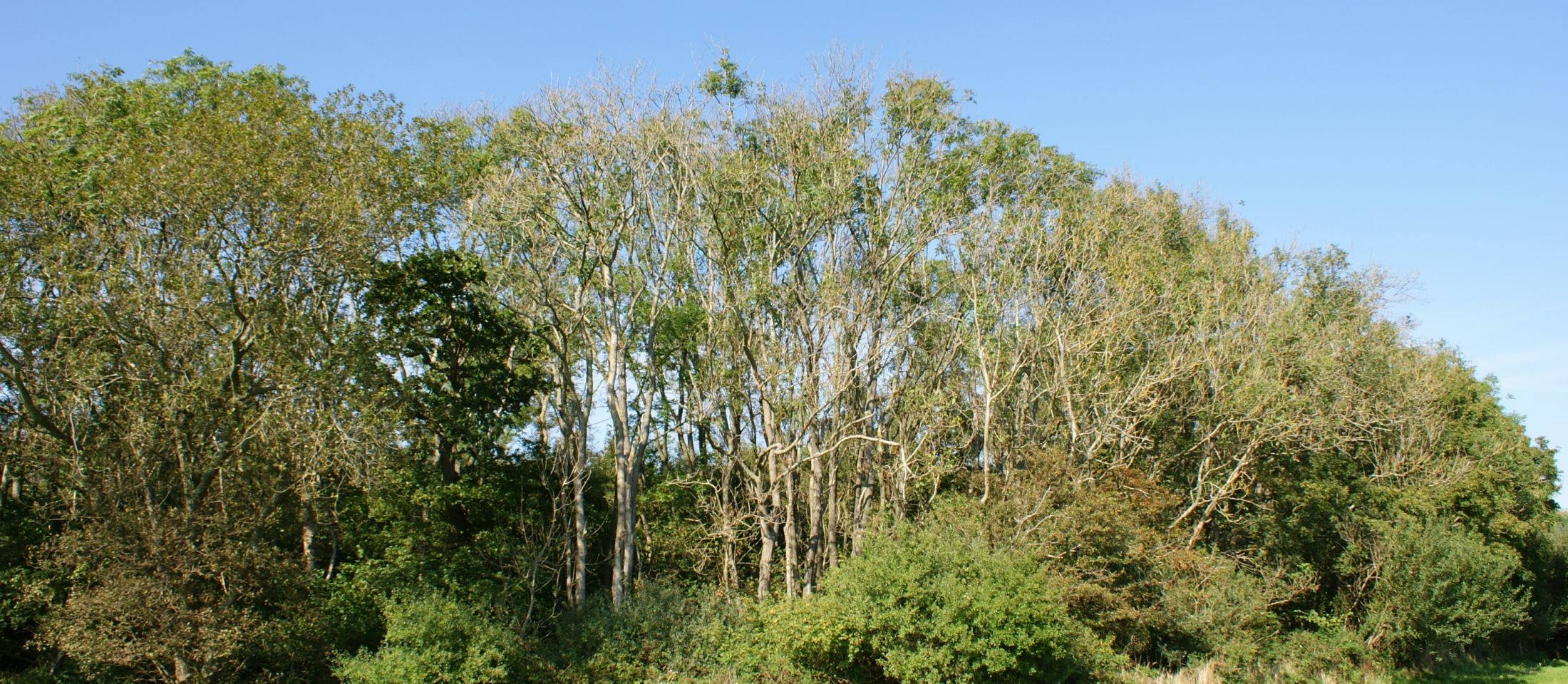
Asholt Wood, Kent, 2014. Photo: Kent Downs

Asholt Wood, Kent, 2014. Photo: Kent Downs
The Forestry Commission released data in early December 2017 that showed 176 newly infected sites across Scotland, England, Wales, the Isle of Mann and Northern Ireland. The map below shows how quickly the disease has spread since it was fist discovered in 2012 and is the most up to date information on how far north it has travelled in that time. The density of the infection sites in 2012 in Kent and East Anglia leads most to believe that trees had been in these areas for a number of years before it was identified and confirmed by the Forestry Commission in 2012.
This table shows that the rate of spread is slowing, however the bad news is that the spread now covers 44.3 % of all of the 10k squares across the country. Isle of Man remains relatively unaffected at this stage.
| 2012 | 2013 | 2014 | 2015 | 2016 | 2017 | Total | % of all 10k squares in country | |
|---|---|---|---|---|---|---|---|---|
| Scotland | 7 | 5 | 33 | 125 | 10 | 27 | 207 | 18.9 |
| England | 82 | 60 | 161 | 224 | 310 | 85 | 923 | 62.8% |
| Wales | 0 | 2 | 5 | 31 | 96 | 63 | 197 | 74.3% |
| N Ireland | 0 | 0 | 0 | 0 | 17 | 0 | 17 | 9.1 |
| Isle of Man | 0 | 0 | 0 | 1 | 1 | 1 | 7.1 | |
| UK (total) | 89 | 67 | 199 | 380 | 433 | 176 | 1345 | 44.3% |
The progression of numbers and appearance of new grid squares over time should not be interpreted as an indication of the rate of spread of the disease. It only indicates when infection sites were found, not when the fungus first arrived at the site, which in many cases cannot be known.
This map and table is from the Forestry Commission site, for more information about the Forestry Commissions approach to ash dieback please go to the FC website.